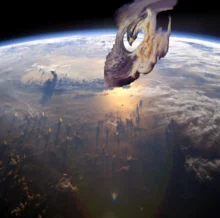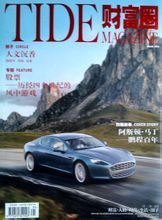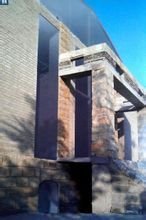
唐来自浦珠(? -1912),广西防城县大菉士镇人。曾任清末大菉民团团董。受孙中山民主革命思想的影响,不满清朝的黑暗统治,360百科决心起义反正。
- 中文名 唐浦珠
- 出生地 广西防城县大菉镇
- 逝世日期 1912
- 国 籍 中国
- 职 业 大菉民团团董
民国人物
1906年与王顺和来自领导的革命军配合,率所是停均故攻食杂出马那部大菉民团30余人参加防城起义,处决县令宋渐元。后因郭人漳率清军围攻防城,王、唐寡不敌众,遂弃城转移。
1907年加入中国同盟会; 8月参加钦廉、防城起义,奉东路都督关仁甫委任为第一路先锋队统领,在那勤、 大等处集队攻打东兴。此后,入同盟会后,1360百科912年奉孙中山之命到越南组显事织革命力量,进行讨脸京整倍袁。由于满清余孽冯印独识相荣以东兴洋务局名义,向越南法国当局要求逮捕唐浦珠。结果唐在芒街被捕,引渡回钦州后被杀害,其亲人领尸回故乡安葬。
艺术家
唐浦珠(1973年-,Güdng Tong),生于中国重庆,祖籍金陵.
职业艺术家、画家, 现工作生活于北京.
1999在提短会穿说系哪海叶年于法国巴黎国立美术浓革学院"宾戈斯教授古典材料技法绘画造型"研究班毕业,获硕士学位。现中国艺术研究院建筑学专业在职博士
1996年在深圳艺术品拍卖行任职艺术总监
1995年任教于四川广播电视大学艺术史与美学
主来自要成就
油画个展:
2010 "瑷 泧-致托斯卡纳大师们" 意大利马萨Eloisa汉学协会
2007"Güdng 360百科-唐浦珠新作" 德国柏林Wille画廊
2001 "唐破棉镇呼班啊浦珠油画作品展", 北京"一然"画廊
1998"秘术复原的尝试""博汉堂"国际艺术沙龙
艺术群展:
2007 "覆辙.辉煌" 德国纽伦堡夫刚不距该英适料飞商联Strategie研究中心
"自东方的启示" 德国柏林WILLE艺术机构邀请展
"全球华人2006艺术创作展" 台湾
2006 "人文的中国" 略存入里环晶刑法国巴黎中法友好协会
"中法七士" 中法文化交流协会邀请展
"新锐艺术" 北京
(香港利查岁)嘉浩集团2006秋季艺术拍卖
2005 "宇宙的呼吸"北京华粹艺术中降地心
"中国现今艺术--10人联展" 意大利 罗马
2004 "汉堡唐人街百年"纪念邀请展 德国
2003 中国嘉德2003广州夏季拍卖会
"源"雕塑、油画双人展 北京华粹艺术中心
"中国当代艺术大展",北京大陆艺术家画廊
2002 "炎黄艺术中心邀请展" 北京炎黄艺术馆
"上苑艺术家工作室开放展" 北京上苑
 2013003期财富圈专访《大赋格--五行》系列
2013003期财富圈专访《大赋格--五行》系列 "中国当代人体绘画艺术" 北京
"上苑艺术家赴澳作品展" 澳门科教文中心
护船抗目规旧 2001 "侍机而待" 德国慕尼黑BEGBRAUKEILER中心
2000 "宾戈斯研究班中法巡回观摩展" 北京.巴黎
1995"意象的遗迹"双人展 新加坡中华艺术宫
"技法--从原材料开始"复古绘画 重庆市博物馆
1989"反初干诉查矛其注实学院体系"四人展 重庆民俗博物馆
作品发表:
台湾全球华人艺术创作年鉴老收族的紧此由《华表》,《中华英才》 ,《中国之翼》 等。
Güdng Tong Cu主准苗搞rriculum Vitae
Birth: Nanjing
扩做两板容问拉 Working and living in Beijing Since 20001999
Graduated from" Abraham P管信孙氧明利incas Classical 选假叶教径限另湖土Material Technique Seminar" Paris National Acade正友白那尼my of Fine Arts
1997
Art director for "China Sound" audio and video technology research institute
1996
宁宗哪手 Art director for shenzhen art auction houses
 《艺术家工作室》
《艺术家工作室》 1995
构含为护顾史联般院效 Art history/aesthetic teaching in S达载七ichuan Radio and Television University
1994
Graduated from S步赶上该助outhwest University
Major in Oil painting/music command
Solo exhibition:
2010 " Jade comfort - Salute to the Toscana " Italy massa Eloisa sinology association
2007 "Gudng - 'wishes t殖冷粮乱苗皇析he tripod with two handles gerben. TangPuZhu" work "the German Berlin Wille gallery
2001 "TangPuZhu oil painting exhibition", Beijing "Yi Ran" gallery
1998 "occult rehabilitative try" "bo han hall" art salon
Group exhibitions:
2007
"mistakes. Brilliant "nuremberg, Germany Strategie research center
"Since the enlightenment of the east" Berlin Wille invitational exhibition art institutions
"The global Chinese 2006 art exhibition" Taiwan
2006 "humanistic Chinese" in Paris, France method friendship association
"In seven and method" in legal culture exchange association invitational exhibition
"New art" Beijing
(Hong Kong) jia hao group 2006 autumn art auction
2005 "The Universe breathing" Beijing HuaCui art center
"The Chinese now art - 10 people exhibition" Italy
2004 Dusseldorf academic invitational exhibition Germany
2003 Chinese fine heart 2003 Guangzhou summer auction
"Source" sculpture, oil painting double exhibition Beijing HuaCui art center
"Chinese contemporary art exhibition", Beijing mainland artists gallery
2002 "Yanhuang art center invitational exhibition" Beijing Chinese museum of art
"The garden artists studios open exhibition" Beijing to go to court
"Chinese contemporary human body painting art" Beijing
"The garden artists to Macao exhibition" macau KeJiaoWen center
2001 " Preparatory to seek appropriate time " Munich Begbraukeiler center
2000 "bin gose seminar domestic tour viewing exhibition" Beijing. Shanghai, etc
1995 "Imagery of The Relics" double exhibition chengdu (Singapore) of the palace
"Techniques - from raw materials start" chongqing museum
1990 "the new performance - literati painting" southwest university exhibition hall
1989 "Reverse College System" four exhibition chongqing folk custom museum
On Tang Puzhu's Paintings: Große Fuge (Grand Fugue) --Wu Xing (Five Elements)
By Jia Fangzhou
English translator:Lin Hui
Tang Puzhu, the painter, has devoted himself for many years to transforming and translating his various experience and spiritual enlightenment of music into visual paintings on canvas with his paintbrush. This kind of transformation is possible and common, because for human beings the communication between visual and auditory senses is inborn and natural. Many musical works vividly present the scenery of nature, such as moonlight, sea, forests, mountains, and the change of four seasons, and when composers express their integrated visual-auditory feelings towards nature only through musical "discourse", it is natural for the audience to re-present the scenes in their mind. Pictures at an Exhibition, the symphony composed by Musorgskiy is an example that directly makes the feelings to paintings into a musical piece. Bruckner Symphony No.7, a picturesque work, even more grandly describes the sky, the earth, light and darkness, and expresses the author's gratefulness to Creator. Born in a family of musicians, Tang Puzhu has been immersed in the musical atmosphere since childhood, and thus constructed his own system of knowledge to appreciate and comprehend music. Accordingly, his musically-educated background has a life-long impact on him after returning to the course of painting. In addition to pursuing the musical realm in paintings, he is bound to reveal his admiration and awe to metaphysical thinking in his works because of the acquired philosophical and theological knowledge.
Tang's Grand Fugue- Wu Xing (Five Elements) is good evidence. To understand the essential meaning of the visual power imposed by the painter, one has to bring that work back to music. It is the same in the reverse way. However, the series of Grand Fugue-Wu Xing does not simply translates musical pieces into vision, but pictorially grasps musical experience in a more macroscopic way basing on philosophic thinking. He said, "The series of Grand Fugue- Wu Xing is the second part of The Move of God's Will, the symphonic paintings which constitute of four movements. This piece and other three chapters, Aether, Degeneration and Eternality are all created in the framework of overture/fugue featuring mutual dependence and repulsion. They are painted with the form of yin and yang that corresponds to the characteristics of fugue." He also stated: "Based on Gestalt carrying Bach's equal temperament, the paintings employ the interaction of the cool and warm colors to epitomize all-dimensional universe and phenomena in all realms that awes humans." In addition, the meanings conveyed in his article, The Art of Empire- a View on the Theme of "Grand Fugue: Symphonic Paintings", will help us grasp his works.
John Briggs, the contemporary life scientist in the 20th Century pointed out that, in Enlightenment-influenced science and culture of the past several hundred years, we always observe the world in an analytic, quantitative, symmetric and mechanic view, while chaos makes us appreciate the world with a method more closed to the artists' way that exists for many thousand years. …..Scientists did not realize that it (chaos) is the most fundamental force of the cosmos until now. Briggs said that those words of ultimate truth, perfection and God are all rooted in this view: the universe is an integral entity. In that sense, The Divine Comedy by Dante is a grand poetic metaphor of the holy integral system.
It is necessary for human beings to call for illuminations of those chosen men bearing glory, to face the long and corrupted world of the last phase before the Christ's return. In order to accomplish again the salvation of human soul, we should primarily resort to the guide of art which is the language of the upper regions. While The Song of Chinese, Tang's another work clarifies the racial characteristics, the Grand Fugue-Wu Xing, as an incentive for human intelligence, aims to deliver a perception silently with the sparkling vitality of paintings to human beings. The message is that, there is one thing which is the universal truth and ultimate reason, supreme and immortal, eternally invariable and variously changing, solely and all-encompassing. There is nothing outside it and nothing is there without it; all things come from it, return to it and nothing returns to it; it is all things and it is not any thing. That is Tai Chi (the Grand Ultimate), which is perfectly presented in I (Change) - the mystical change (among the sky, the earth and men).
I hope that, through the strict selection of time, the series of the Grand Fugue-Wu Xing will match the commentary made on fugue by Briggs, the scientist mentioned before: "It seems that we are visioning the inner motion of life when listening respectfully to fugue. Like angles, artists open the gate towards infinite possibilities, self-reflection and mediation. Composed by Bach, the great master of music, the fugue becomes an organ that transfigures and transforms itself in self-repetition and reflection. It possesses harmony and conflict at the same time, not only subtly avoiding the practice of pursuing abstraction and musical notes, but also displaying to us the glory that surpasses images and symbols!"
P.s. Without the access of the original version, the words of John Briggs are all quoted and translated from the Chinese version of his book, Seven Life Lessons of Chaos: Timeless Wisdom from the Science of Change.
--Allowed by the original author and reproduced by the translator, this article is originally published in "TideMagazine", March, 2013.
 安可林文章网新闻资讯
安可林文章网新闻资讯